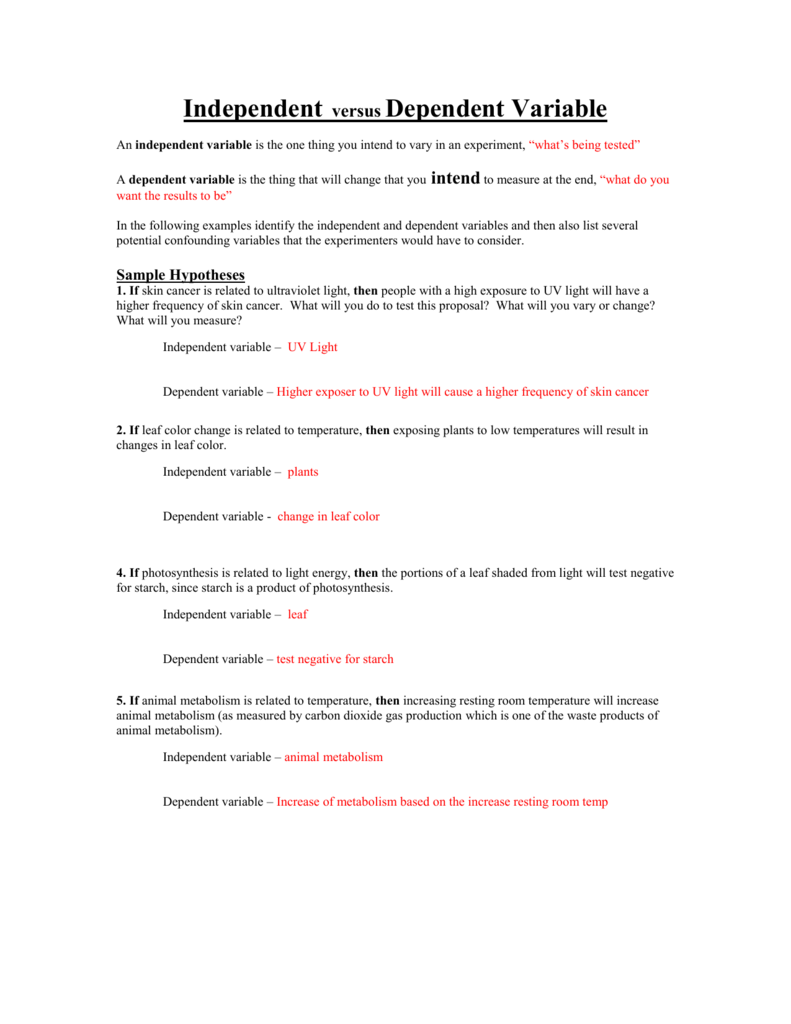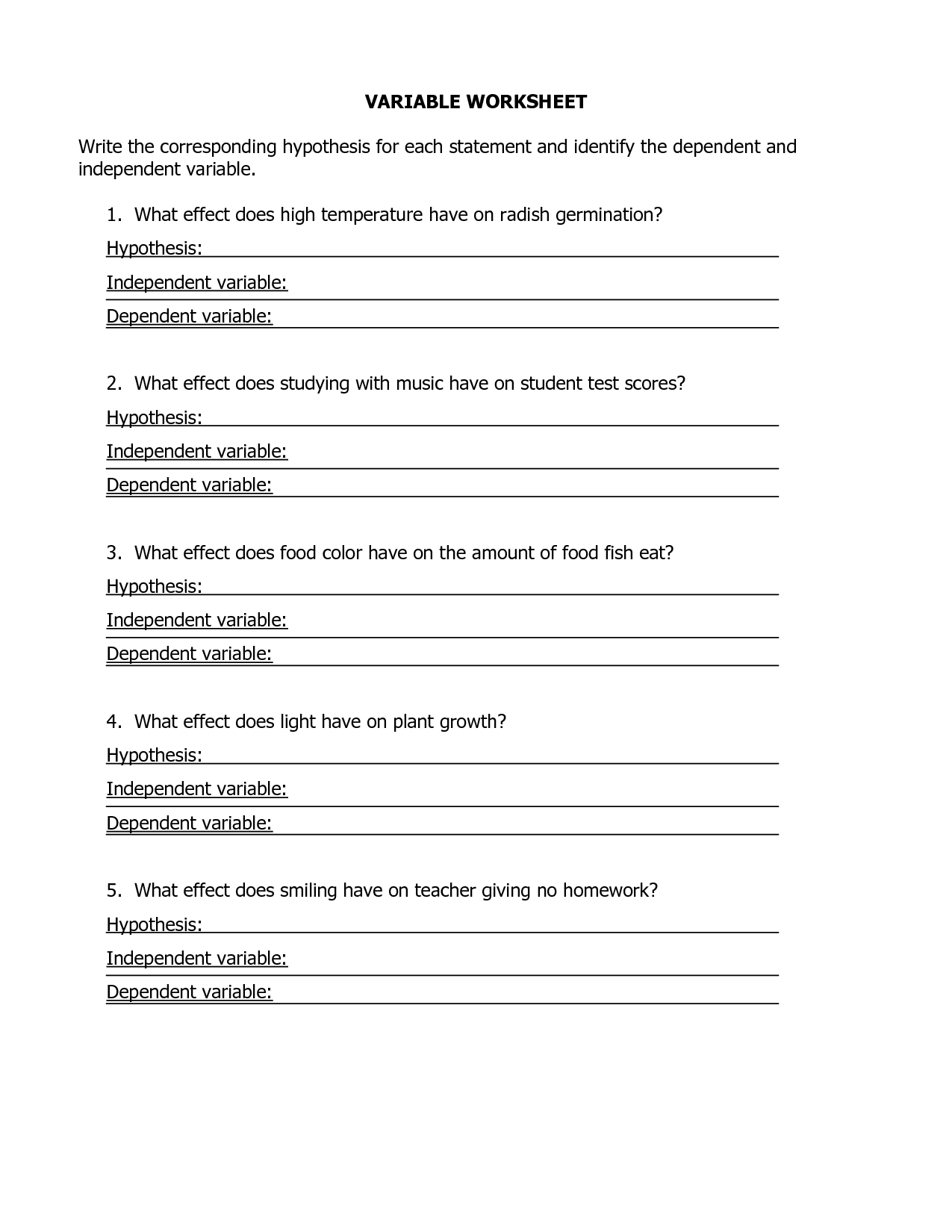Remember that science fair project in middle school where you had to test the effect of different fertilizers on plant growth? You spent weeks meticulously measuring, recording data, and trying to figure out what caused the variations you observed. But amidst the excitement of the experiment, a crucial question often gets overlooked: how do we truly understand what we’re testing? That’s where the concept of identifying controls and variables comes in. It’s the backbone of any scientific investigation, ensuring that our findings are accurate, reliable, and truly reflect the relationship we’re trying to explore.

Image: www.englishworksheet.my.id
Understanding controls and variables isn’t just essential for science fair projects; it’s fundamental to scientific research across disciplines. From medical trials to environmental studies, mastering this concept allows us to isolate the specific factors that influence an outcome, leading to a deeper comprehension of the world around us. This article will delve into the world of controls and variables, exploring their definitions, roles, and practical applications in scientific inquiry.
Dissecting the Scientific Method: Controls and Variables Explained
Controls and variables are crucial components of the scientific method, a systematic approach for gathering knowledge about the natural world. The scientific method relies on a series of steps that allow us to test hypotheses, draw conclusions, and refine our understanding. At the heart of this process lies the ability to identify and manipulate specific factors within an experiment, making it possible to ascertain cause-and-effect relationships.
Understanding the Control
The control, in essence, serves as the baseline or point of comparison in an experiment. It represents the “normal” or “unchanged” state while the rest of the experiment is manipulated. Imagine testing the effectiveness of a new fertilizer on plant growth. You would have a control group of plants that doesn’t receive the fertilizer, representing the natural growth patterns. This control group allows you to compare the growth of the plants treated with fertilizer to those that weren’t, enabling you to determine if the fertilizer has a noticeable effect.
Defining Variables
Variables, in contrast to controls, are the elements that change or vary in an experiment. They are the factors that we manipulate, observe, and analyze to understand their effect on the outcome. Returning to our fertilizer example, the type of fertilizer is the independent variable – the factor we’re directly changing. The growth of the plants is the dependent variable – the factor we’re observing and measuring as a result of the fertilizer’s effect.
There are two primary types of variables:
- Independent variable: This is the factor that is intentionally manipulated or changed by the experimenter. In our fertilizer example, the type of fertilizer is the independent variable.
- Dependent variable: This is the factor that is measured or observed as a result of changes in the independent variable. In our example, the plant growth is the dependent variable.

Image: www.worksheeto.com
Understanding the Role of Controls and Variables
Controls and variables work together to ensure a meaningful and accurate scientific investigation. The control provides a reference point, making it possible to determine if any changes observed are directly attributable to the independent variable. Without a control, it would be impossible to isolate the impact of the factor we’re interested in, leading to ambiguous and inconclusive results.
Variables, on the other hand, allow us to explore specific relationships between factors and outcomes. By systematically manipulating the independent variable, we can observe how the dependent variable changes in response. This process enables us to test hypotheses and generate scientific evidence that supports or refutes our initial ideas.
Identifying Controls and Variables: A Practical Guide
Now that we understand the fundamental concepts of controls and variables, let’s apply this knowledge to a real-world example. Imagine a scientist wants to investigate the effect of different types of light on the growth of algae. Here’s how they might approach the experiment:
1. Define the Research Question
The starting point for any scientific investigation is the formulation of a research question. In this case, the question might be: “Does the type of light affect the growth rate of algae?”
2. Formulate a Hypothesis
Based on prior knowledge or observations, the scientist might propose a hypothesis: “Algae will grow faster under white light compared to blue light or red light.”
3. Identify the Controls and Variables
- Independent variable: The type of light (white, blue, red).
- Dependent variable: The growth rate of the algae.
- Control group: Algae grown under natural sunlight conditions.
4. Design the Experiment
The scientist would set up multiple containers with algae, each exposed to a specific type of light (white, blue, red), and a control group exposed to natural sunlight. All other conditions, such as temperature, water quality, and nutrients, should be kept consistent across all groups.
5. Record and Analyze Data
The scientist would measure the growth rate of the algae in each container over a set period. They would then analyze the data to compare the growth rates under different light conditions and determine if there was a significant difference between the groups.
6. Draw a Conclusion
Based on the data analysis, the scientist would draw a conclusion about whether the hypothesis is supported or refuted. For example, if the algae grew significantly faster under white light, the hypothesis would be supported.
Boosting Your Scientific Literacy
Identifying controls and variables is crucial for anyone seeking to understand scientific research. Here are a few tips to improve your ability to recognize and analyze these concepts in different contexts:
Engage with Scientific Articles
Read scientific articles from various disciplines to gain a deeper understanding of how scientists use controls and variables to conduct their research. Pay attention to the experimental designs, methodology, and the role of control groups.
Participate in Scientific Discussions
Join online forums, scientific communities, or attend talks and conferences to engage in discussions about scientific research. Participating in these activities will expose you to different perspectives on controls and variables, enhancing your comprehension.
Conduct Your Own Experiments
Don’t be afraid to conduct your own small experiments at home or in a classroom setting. The experience of designing an experiment, identifying controls and variables, and collecting data will provide valuable insights into the scientific method.
Frequently Asked Questions (FAQs)
Q: What if an experiment only has one variable?
A: It’s possible to have experiments with only one independent variable. For example, an experiment testing the effect of a new drug on blood pressure would have the drug as the independent variable and blood pressure as the dependent variable. The control group would receive a placebo.
Q: Does every experiment need a control group?
A: While control groups are essential for many experiments, they aren’t always required. Sometimes, the nature of the experiment may not necessitate a direct comparison with a baseline condition. For example, if you’re studying the growth rate of a new species of plant, you wouldn’t necessarily need a control group as you’re exploring unknown parameters.
Q: How many variables should an experiment have?
A: The number of variables in an experiment depends on the research question and the complexity of the system being studied. Ideally, experiments should be designed to isolate the effect of a single independent variable on the dependent variable. However, there are cases where multiple independent variables are relevant and need to be investigated.
Identify The Controls And Variables Answer Key
Conclusion
Understanding the concept of controls and variables is fundamental to appreciating the scientific method and its role in generating reliable knowledge. Mastering the distinction between these factors empowers us to analyze scientific research critically, interpret experimental data accurately, and ask meaningful questions about the natural world. By engaging with scientific articles, participating in discussions, and conducting our own experiments, we can cultivate a deeper understanding of how controls and variables work, making us more informed and engaged citizens in a world driven by scientific inquiry.
So, are you interested in exploring the world of science further? Share your thoughts on controls and variables in the comments below!






